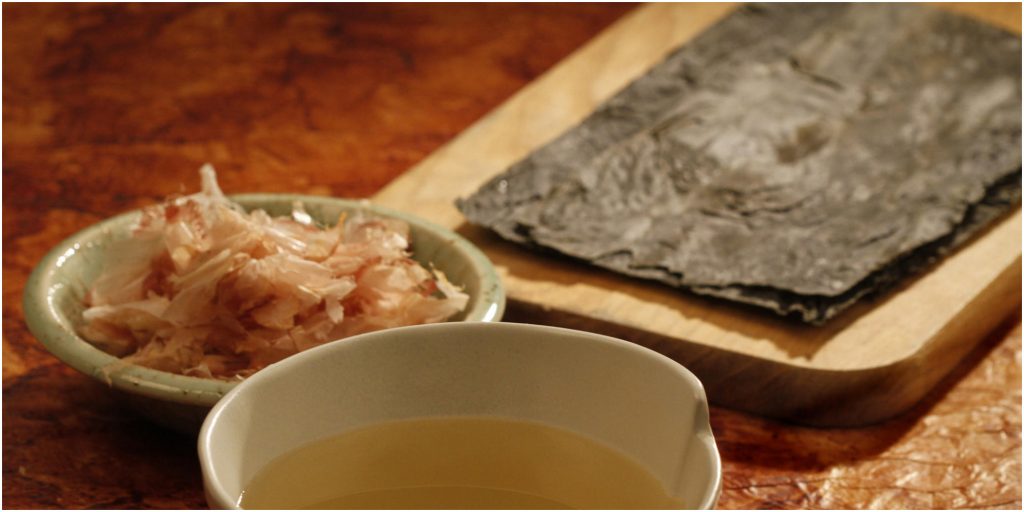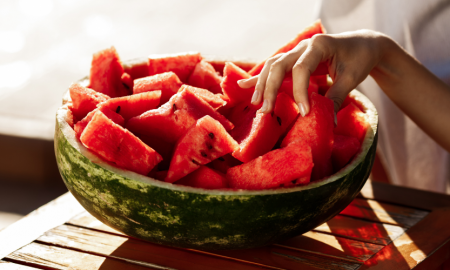
Move Aside Bone Broth – There’s a New Nutritious Broth in Town!

Dashi is one of those things in life that are so simple yet so complex, and this delightful broth is almost always the product of kombu, a kind of dried kelp (awase), and katsuobushi (katsuo and awase), which is dried tuna Who says nutrition isn’t delicious? The Japanese have come up with a glorious broth chock full of umami flavor to soothe the soul and replenish your cells like no other broth! Dashi is the name of this divine concoction, and it is prepared by carefully boiling an assortment of nourishing ingredients only enough to delicately flavor the liquid. Simple but powerful. Learn everything you wish you knew sooner about dashi right here!
The Five Types of Dashi
 Dashi is one of those things in life that are so simple yet so complex, and this delightful broth is almost always the product of kombu, a kind of dried kelp (awase), ad katsuobushi (katsuo and awase), which is dried tuna flakes. It can, on occasion, include shiitake mushrooms (shiitake variety, mostly vegan), dried sardines, or anchovies (iriko). Another vegan range of dashi is made from kelp and called kombu.
Dashi is one of those things in life that are so simple yet so complex, and this delightful broth is almost always the product of kombu, a kind of dried kelp (awase), ad katsuobushi (katsuo and awase), which is dried tuna flakes. It can, on occasion, include shiitake mushrooms (shiitake variety, mostly vegan), dried sardines, or anchovies (iriko). Another vegan range of dashi is made from kelp and called kombu.
What’s the Fuss About Umami?
Umami is the fifth flavor, the one that’s difficult to put the finger on, the one that is beyond the salty, sweet, sour, and butter. Professor Kikunae Ikeda came up with the term way back in 1908. It just so happens that the professor of Tokyo Imperial University discovered the taste in a comforting bowl of – you guessed it – dashi. The umami flavor profile is one that makes several Japanese dishes scrumptious.
This earthy and wholesome umami is what makes dashi so darn possible. Dashi serves as a delicious and hearty base for ramen and miso soup, Japanese sauces, and hot pots, and a whole lot more. Whenever a recipe calls for liquid in the Japanese cuisine, the preferred liquid is dashi.
It Packs a Punch
 Broths, especially the flavorful ones, are full of nutrients. Dashi is no exception. The simple broth has healthy and essential minerals and nutrients like vitamins B, C, D and E, calcium, magnesium iron, zinc potassium, and even iodine (which many people are deficient in).
Broths, especially the flavorful ones, are full of nutrients. Dashi is no exception. The simple broth has healthy and essential minerals and nutrients like vitamins B, C, D and E, calcium, magnesium iron, zinc potassium, and even iodine (which many people are deficient in).
Amino acids also assist significantly in muscle damage. In addition to all of these nutrients, you can add dry bonito or tuna in the broth. That’s because it can lower blood pressure and boost cognitive performance and blood circulation. Wow!
Bone Broth vs. Dashi
Bone broth is rich and comforting. Yet powerfully nutritious broth that you can sip on or use in recipes as a liquid replacement. Bone broth takes notoriously long to make. You must coax the collagen out of the bones for many hours over heat until it is a proper bone broth. However, dashi offers immense ease as you don’t even need to boil water to make it. You could steep all the ingredients in water overnight and call it a day!
Of course, not remembering to remove the ingredients after a day renders your broth useless. But it is a helpful tip if you have minimal time! Also, bone broth is made with, well, bones. However, if you are vegan, you can make a mineral-rich broth by using mushroom, seaweed, and kelp to get your umami punch!
A Word on (Sea) Weed
 Seaweed is the latest’ superfood’ under the spotlight these days. It has crept into a variety of foods, including cookies, spaghetti, crackers, and beer! Marine algae have immense benefits on health and longevity. One can see the living examples of the Japanese who use it extensively in their cuisine.
Seaweed is the latest’ superfood’ under the spotlight these days. It has crept into a variety of foods, including cookies, spaghetti, crackers, and beer! Marine algae have immense benefits on health and longevity. One can see the living examples of the Japanese who use it extensively in their cuisine.
The global production of seaweed surpasses that of lemons and limes by the tonne! Now that is phenomenal. So, perhaps it is time you learn all about the red, green, and brown algae and the nutrients they give the human body. However, do it with caution! We are sure you don’t want to deal with excess iodine in your system from a dashi binge! Nor do we want any heavy metal toxicity. But it can’t happen from the diet. In most cases, it is because of the supplements you consume.
Now that you know of all the benefits of the simple dashi broth, you should get some as soon as possible. You can start using it in stir-fries, steamed fish recipes, clam soup, miso soup, and soba soups. The sky is the limit! You can find it at any Asian store. If you don’t get it there, ask around, and you might find someone who can bring it for you!
More in Diet
-
`
Fat Jabs May Cure Cocaine Addiction and Boost Heart Health, New Study Finds
What if the same jab that helps you lose weight could also help you kick a cocaine habit? Sounds wild, but...
September 21, 2025 -
`
Dwayne Johnson Shocks Fans With Dramatic Weight Loss Transformation
Dwayne “The Rock” Johnson stunned the crowd at the 2025 Venice Film Festival with a slimmer look that set social media...
September 20, 2025 -
`
Dwayne ‘The Rock’ Johnson Stuns Fans With Slimmed-Down MMA Fighter Look
Dwayne ‘The Rock’ Johnson isn’t just flexing muscles anymore. In “The Smashing Machine,” Dwayne Johnson strips down the bulk, sheds his...
September 13, 2025 -
`
Here’s How Fat-Blocking Green Tea Microbeads May Aid Weight Loss
Scientists are exploring an innovative way to reduce fat absorption in the body—tiny edible beads made with green tea, vitamin E,...
September 12, 2025 -
`
Why the Heart Is Slightly to the Left and Not Perfectly Centered
The heart is one of the most vital organs in the body, yet its placement often raises questions. Many assume it...
August 16, 2025 -
`
Ozzy Osbourne’s Most Shocking and Beloved Pop Culture Moments
Few figures in rock history have carved out a legacy as vivid and unpredictable as Ozzy Osbourne. Beyond his groundbreaking work...
August 10, 2025 -
`
Are Mono Diets Worth It – or Just a Dangerous Trend?
As summer brings on the pressure to slim down fast, the internet lights up with diet trends promising instant results. One...
August 3, 2025 -
`
Why Motivation Is Essential for Sustainable Fitness Success
Motivation isn’t something that shows up when it’s convenient—it’s something that needs to be built, shaped, and sustained. Many people struggling...
July 27, 2025 -
`
The Mystery of Human Body Parts That Science Still Can’t Solve
The human body is a patchwork of evolutionary choices, quirks, and mysteries. From skeletal structure to the tiniest gland, everything tells...
July 18, 2025










You must be logged in to post a comment Login